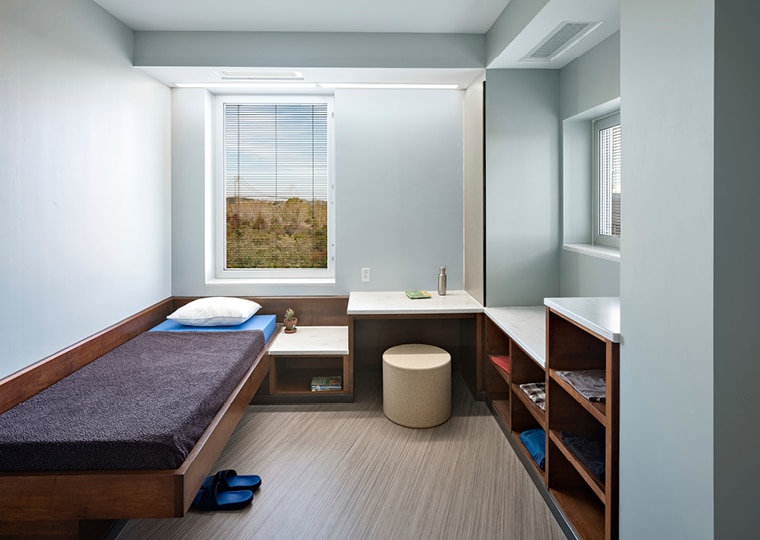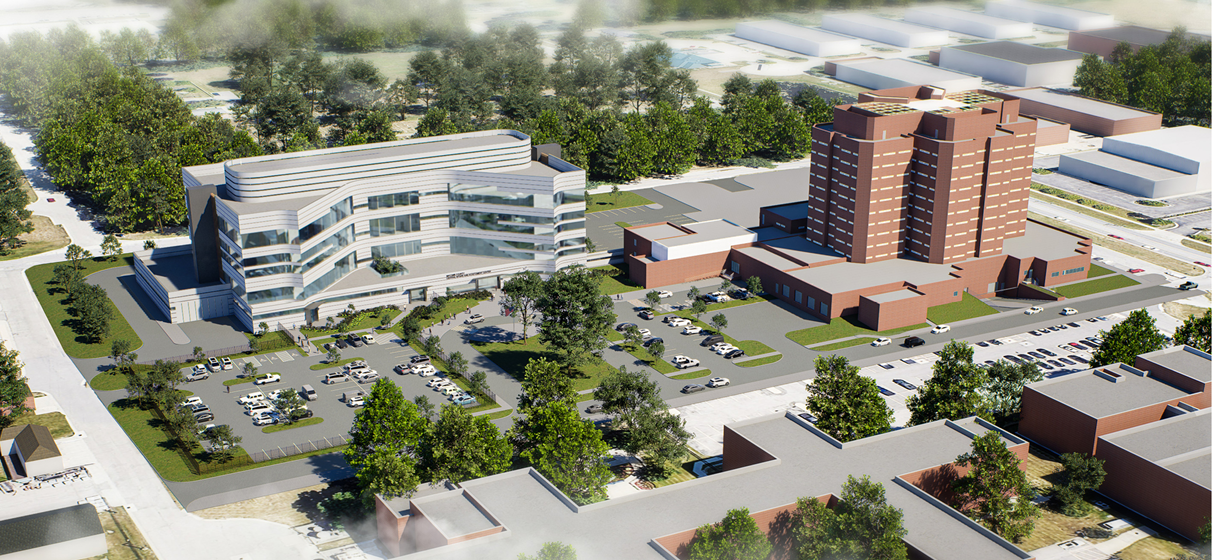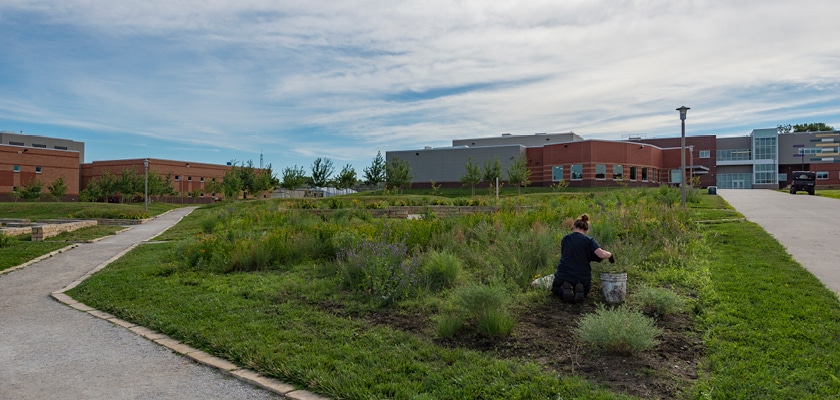
To inform the design process of the Baltimore Therapeutic Treatment Center (BTTC), STV brought together global thought leaders in the medical, mental health, and corrections fields to engage in a series of knowledge sharing sessions. In this three-part series, we explore the nuances of correctional design and its impact on those in contact with the justice system by sharing insights and knowledge gained from these sessions.
In part three of this series, we examine specific design interventions and principles that contribute to therapeutic environments. This piece features particular insights from Kevin Murrett, AIA, president and behavioral health practice lead at Architectural Resources; Erin Persky, Assoc. AIA, justice facility planner at Erin Persky & Associates LLC; John Baldwin, former director of the Iowa and Illinois Departments of Correction; and Rikke Hansen, Danish architect and designer of the Norwegian Halden Prison, which has been labeled “the most humane prison in the world.”
A therapeutic environment refers to a physical space that is designed to support the emotional, psychological, and physical needs of individuals in treatment or rehabilitation. These environments prioritize safety, privacy, comfort, and a sense of control for the individuals who inhabit them.
In correctional design, therapeutic environments play a significant role in facilitating the rehabilitation and reintegration of detainees back into society. Research shows that providing detainees with access to therapeutic environments can lead to better mental health outcomes, reduced recidivism rates, and improved overall well-being. For correctional staff, who are often exposed to a high level of stress, danger, and burnout in their work, therapeutic environments provide a supportive work environment that can help to improve their job satisfaction, reduce turnover rates, and enhance their overall well-being.
“Overall, our goal is to create a safe environment that eliminates psychological barriers, inspires hope and recovery, and promotes a more positive and receptive patient response to treatment, achieved through the use of therapeutic design strategies,” said Kevin Murrett, AIA, president and behavioral health practice lead at Architectural Resources, who is partnering with STV on the BTTC design.
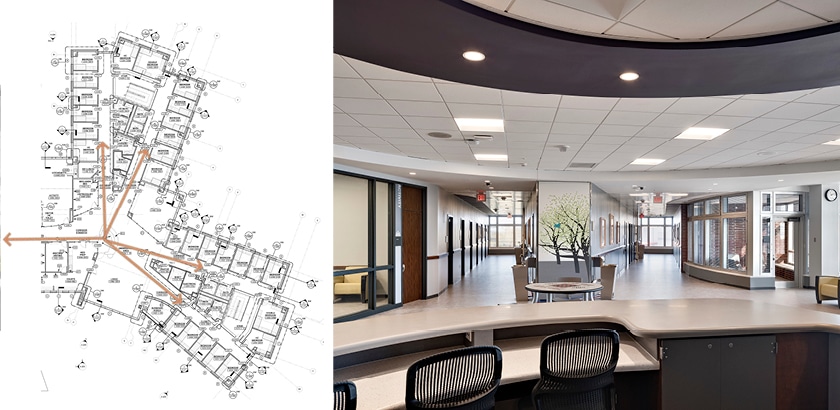
Creating clear sightlines is vital to balance security operations with the privacy and dignity of people in custody. Our goal in a correctional facility is to achieve a single point in a plan from which staff can see every cell, dayroom, outdoor space, and entrance within a housing unit. In addition to a central observation point, there should be staff spaces that allow for casual observation. At the same time, partial walls allow detainees to maintain a sense of privacy, particularly during medical screenings. All of this can be achieved with a sense of scale and intimacy that is recovery focused.
A trauma-informed design approach can support therapeutic, restorative outcomes for residents and staff. Trauma frequently arises from the unpredictability of and lack of control over one’s environment in a correctional setting, with doors slamming, toilets flushing, and incessant bright lights. This sensory intrusion can be very damaging. Our designs attempt to return as much control as possible of the physical environment to the user, for instance through providing the ability to control temperature, windows, doors, or furnishings in a safe manner.
The ability to control lighting in particular, including its intensity and color rendition, can positively impact behaviors, as established through the study of chronotherapeutics and circadian rhythms. A tailored lighting intervention can result in enhanced cognitive function, reduced depression and agitation, improved sleep quality, and better quality of life.
Staff, residents, and even visitors should also be provided the opportunity to separate themselves from uncontrolled sensory stimulation and refocus themselves from the custodial setting. Quiet rooms and spaces for calm, focused group activities can support respite for building users. Visiting areas should be designed to support a relaxing and restorative time with loved ones, for instance through conversational seating arrangements.
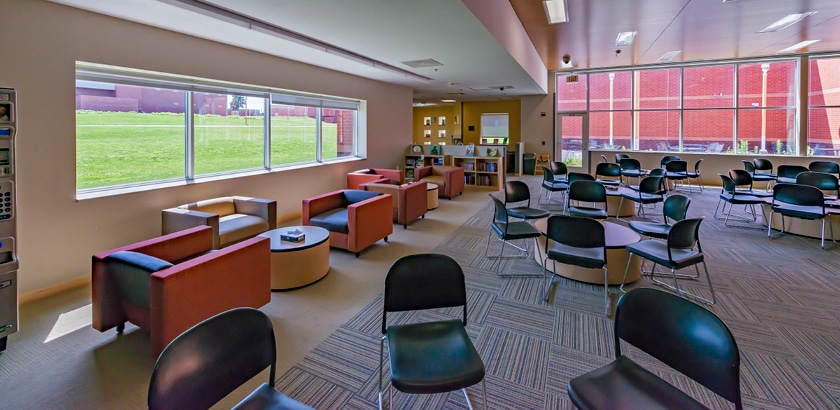
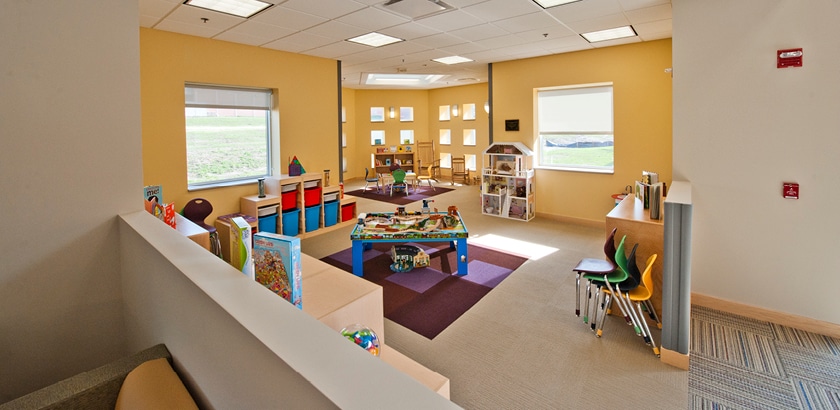
The concept of respite can be further supported by creating a mental and physical connection to nature. “Nature represents a neutral space that everyone has equal access to, a free space with no power but its own,” said Rikke Hansen, a Danish architect, who is serving as an independent consultant for the BTTC program. “It’s able to stimulate and offer refuge for the mind, so it plays a large role in both treating and rehabilitating.”
Biophilic design seeks to address the basic human need for nature by integrating natural elements with the built environment. Research shows that it leads to increases in feelings of serenity, optimism, energy, and overall contentment, and decreases in psychological and physiological stress, aggressive behavior, depression, and idleness. This can be achieved through a variety of strategies: providing natural light and views to nature, integrating natural features along circulation paths, installing murals and other art, but also providing access to fresh air and outdoor spaces, exposure to sunlight and nightlight, foliage and water. These features should be located to ensure that all users are exposed to nature every day in some capacity.
“Access to nature means not just looking at it, though that’s a big part,” said Erin Persky, Assoc. AIA, justice facility planner at Erin Persky & Associates LLC, another consultant and collaborator for the BTTC project. “It’s really the activation of all five senses through the interaction with nature.”
Finally, it is important to establish a sense of place, as traditional detention centers are notoriously maze-like and spatially disorienting. Color schemes, materiality and texture, furnishings, and other design features can be used to cue the functional purpose of a space and create a sense of spatial orientation. This may help individuals feel present in their activities and engage more readily in the immediate tasks at hand.
“Materials allow light and shadow to reflect and add a sensitivity to the otherwise tough carceral life for detainees and staff,” Hansen said.
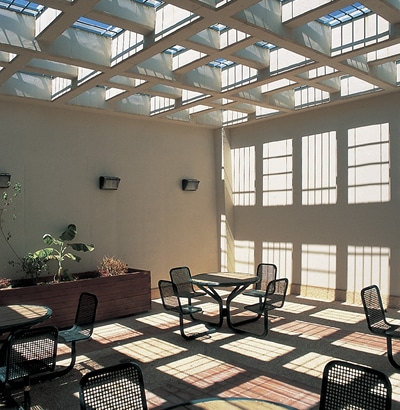
Achieving a therapeutic environment inside a correctional facility requires a delicate approach, and collaboration is the key to our design process. Teamwide site visits to existing and new facilities can create a common vocabulary between the client and design team and align them on a project’s mission. Townhall presentations can involve stakeholders and build understanding, enthusiasm, and momentum for a project. Throughout design and construction, mockups are critical for exploring design options, engaging the correctional and clinical teams who will be working in the space, and working out routines and procedures. It is crucial to identify and involve future leaders and influencers who will be present when the project is completed.
“At the Iowa Correctional Institution for Women, the processes have an intuitive workflow,” said John Baldwin, former director of the Iowa and Illinois Departments of Correction, and an independent collaborator with STV for the BTTC project. “From the first day of operations, staff felt like they had been at the facility for years. The spaces felt right for correctional officers and nurses. This shows that it is critically important to have staff on your design team.”
Thank you for following along our three-part series on correctional design. STV’s justice team has spearheaded best practices in the design of humane justice facilities for more than three decades. To learn more, visit stvinc.com.

